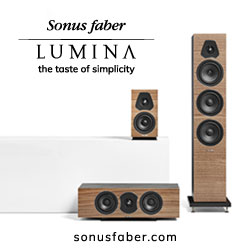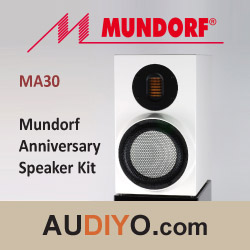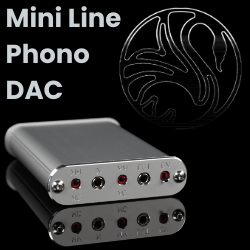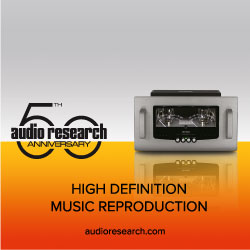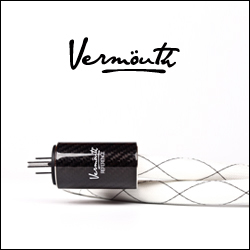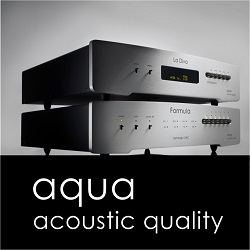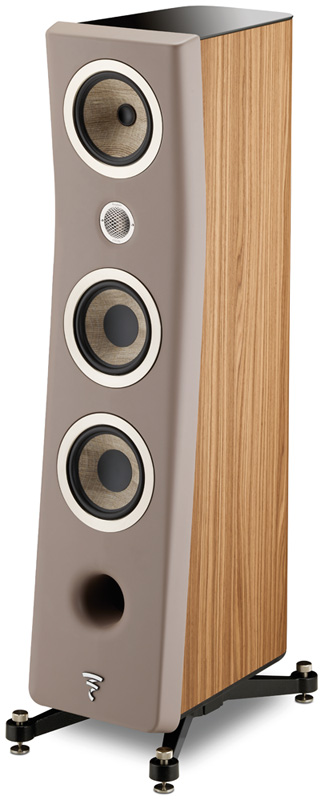
Listening
Once I finished breaking in the Kanta N°2 (about 150 hours) the first thing I noticed about its sound was an inherent warmth across its frequency range, right across and into the treble. It might seem odd to describe the high frequencies as warm but it is something that goes hand in hand with low distortion, highly coherent drivers. Now to be sure, the Kanta N°2 is not rolled-off. On the contrary, I found it to be very extended and open in the high frequencies. There was also no apparent lack of treble energy but its high frequencies were smooth and absent of any sense of thinness or leading edge emphasis. This smoothness and warmth in the treble gave the Kanta N°2 a sense of ease; most desirable for long listening sessions as well as for music tracks that may themselves lack smoothness… anyone for some Led Zeppelin?
Since I own the Focal Electra 1008 Be standmount speakers it made sense to do a little comparing. As expected, the standmount was no match for the Kanta N°2 in the low frequencies, with the latter delivering more impact, fullness and depth. Comparing the midrange, it was quite obvious that the Kanta possessed greater inner warmth, delivering vocals with more realism and life. The treble of the Focal Electra 1008 Be was noticeably thinner and apparently crisper, calling out leading edges on notes, while the Kanta N°2’s portrayed treble detail in a less obvious manner, exposing details intrinsically within the music. There are those that might avoid metal dome tweeters, Beryllium included, favouring soft-dome tweeters for their slightly softer, slightly warmer and perhaps more organic qualities. Yet, it is in this very regard that the Kanta will surprise, and perhaps win over some of these dissenters. The IAL3 tweeter in the Kanta N°2 combines the accuracy, extension and air of a Beryllium tweeter, together with the warmth that wins over many to soft-dome tweeters.
I gave a listen to the track “House of the Rising Sun” via Tidal HiFi, from the album Songs of Anarchy – Season 1-4. The opening vocals were rich and large, the rumble of the lead singer’s chest revealed, just as it should. It was obvious that the Kanta N°2 has no trouble with rendering scale, casting the large and ominous presence of this track. The thump of the kick drum was produced with a heavy thud, assuring me of this speaker’s readiness to rock. Moving to the Cowboy Junkies, The Trinity Session, it was obvious to me that the Kanta N°2 can dig admirably low. Though it can’t provide the weight on the lowest of audible frequencies (20 to 30 Hz) like a subwoofer or large tower might, it does give you a great sense of what’s going on down deep, right to that 30 Hz threshold. When it comes to bass, the Kanta N°2 most certainly delivers textured, weighty and dynamic bass, without any undesired bloat. I relished in the bass rhythms of tracks such as “Am I Wrong”, from 6 String Theory. Other tracks where the Kanta N°2 demonstrated its proficiency with bass were “Something Evil” by the Hot Damns and “Flight of the Cosmic Hippo” by Béla Fleck.
I was taken aback by how realistic the midrange of the Kanta N°2 was with voices, like Lori Cullen’s on the track “Moon River”. The N°2 provides just enough warmth to breathe life into recordings. It performs a lovely balancing act between detail portrayal and musicality; leaning just slightly to the warm-side of neutral, while also favouring musicality over forensic detail retrieval. What you hear with the Kanta N°2 in the midrange is detail that conjures realism. Speaking of realism, the Kanta N°2 provided me with a spine tingling experience when playing Cassandra Wilson’s album title track “Another Country”. Here it was exceptional at revealing the accurate timbre of the woodblock strikes, preserving the natural tone, reverberation and sustain impeccably.
Soundstaging and imaging were also no obstacles for the Kanta N°2. This, in fact, would be one of its strong points. The speaker is able to cast large soundstages when called for but shrink to the occasion of a jazz trio. Images are clearly laid out, separated, and anchored. Front to back layering is also tactfully accomplished by the N°2. When tracks contained wrap-around soundstages, the Kanta was able to deliver. There was also a good measure of height or buoyancy to images when called for. I took note of the manner that the Kanta N°2 presented images. One thing it doesn’t do is spotlight or for that matter, highlight image outlines; rather, the N°2 depicts images in three dimensions with soft edges. I apply the analogy of plasma vs. LCD here. Position the Kanta N°2 well and you will be rewarded with an amazing disappearing act, the kind of which is usually reserved for only the likes of standmount speakers.
While the Kanta N°2 is able to deliver copious amounts of musical detail from recordings it never leans to the analytical. I would consider them to be both an audiophile and a music lover’s loudspeaker. Play lesser recordings on them and they draw your attention to the best parts within, while avoiding undue attention to recording weaknesses. But, play great recordings on the Kanta N°2 and it will surely blanket you in aural beauty. The touch of warmth the N°2 possesses also makes it not too demanding on ancillary equipment. Yes, an integrated amplifier will surely do but when you are ready to move upscale on amplification, the Kanta will stand up and deliver more.
The Kanta N°2 has been a welcome guest at my home since its arrival. From its distinctive style, excellent build and finish, and through to its performance, the Kanta N°2 has been an absolute pleasure to experience. Yes, there is a lot of competition in this price category and there are a few other loudspeakers at this price point that I could recommend but the Kanta N°2 carves out its own spot amongst the crowd. Incorporating the latest in Focal innovations, Kanta makes the unobtainable, now obtainable. I’m not exactly sure where the name Kanta originates. My guess is that it has something to do with the Spanish word “Canta” that means sing or perhaps from the Filipino word “Kanta” that means song. Either derivation would be appropriate but for now, when it comes to the Kanta N°2, I’d like to think of it meaning, ‘a loudspeaker that Kanta miss a note’.
For more info, please visit www.focal.com



